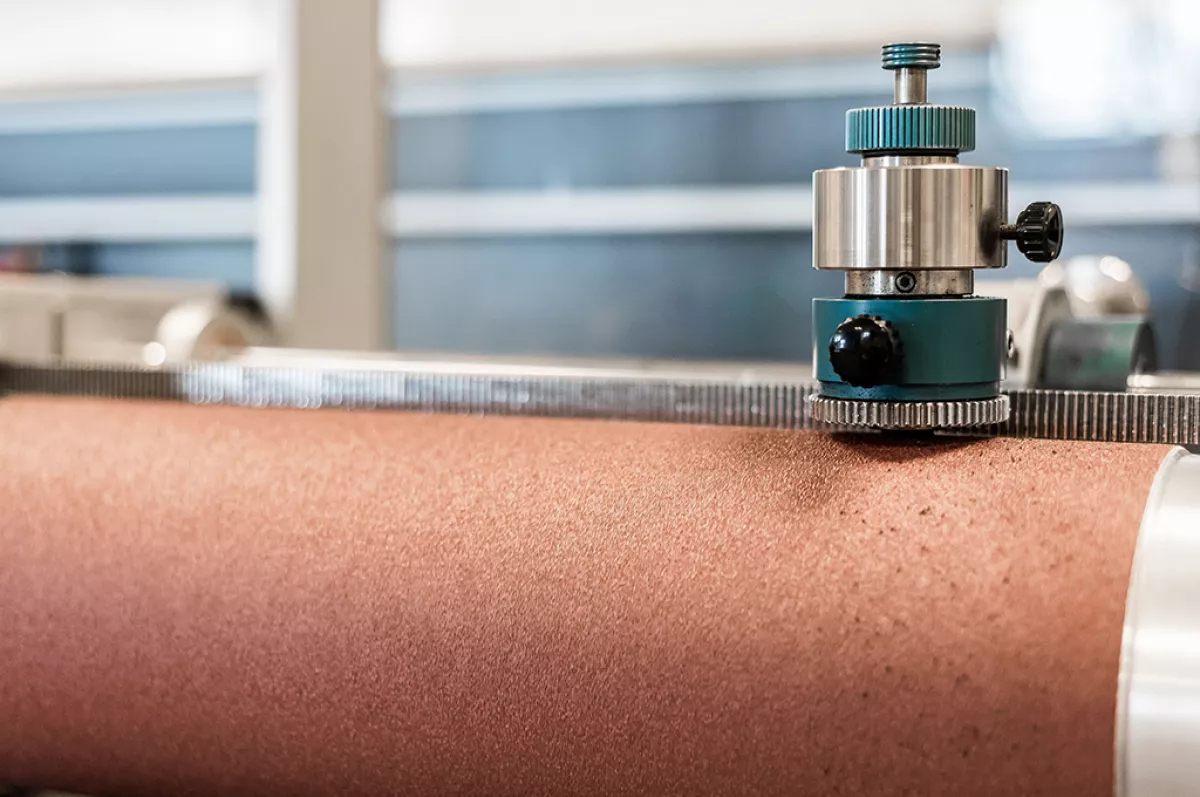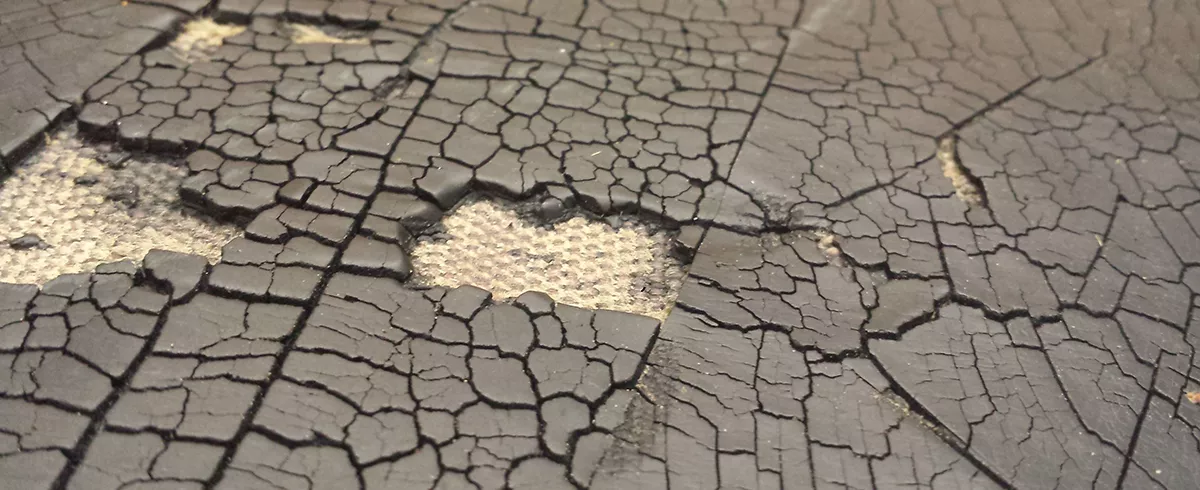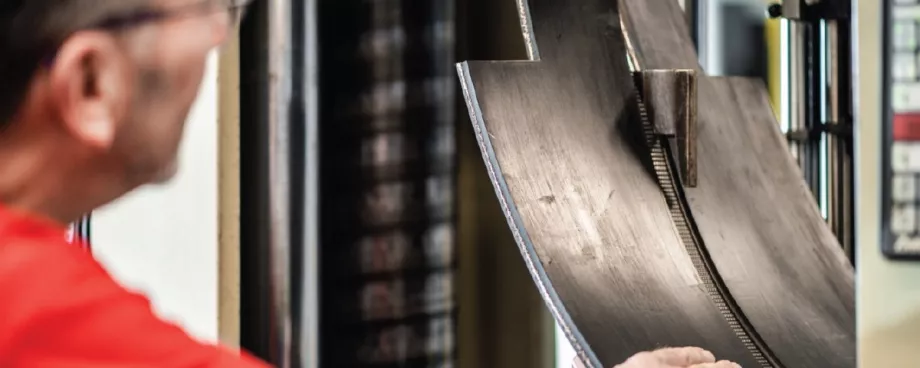Different Tests for different Demands
As I touched on earlier, there are many different types of belt and an even wider array of different types of rubber covers (commonly known as cover grades or cover qualities) that are needed to protect the belt carcass from whatever they have to convey. The primary rubber cover grades are:
- Abrasion (wear) resistant
- Heat resistant
- Oil resistant
- Extreme cold
- Fire
Rubber covers often need to be able to cope with a combination of factors, such as fire and oil. However, one that is common to all is the ability to resist abrasion (wear). The most commonly used belting also happens to be abrasion resistant, so that seems to be the best place to start.
Abrasion – Standards
The wear resistance quality of a conveyor belt is usually the single most important factor that will determine its operational lifetime and consequently its cost-effectiveness. There are two internationally recognised sets of standards for abrasion, EN ISO 14890 (H, D and L) and DIN 22102 (Y, W and X). As mentioned earlier, in Europe it is the longer-established DIN standards that are most commonly used. Generally speaking, DIN Y (ISO 14890 L) relates to ‘normal’ service conditions and DIN W (ISO 14890 D) for particularly high levels of abrasive wear. However, DIN X (ISO 14890 H) is regarded as the most versatile because in addition to resisting abrasive wear it also has good resistance to cutting, impact (from high drop heights) and gouging, usually caused by heavy, sharp materials.
Abrasion – Testing
The test method for abrasion (ISO 4649 / DIN 53516) is actually quite simple. Abrasion resistance is measured by moving a test piece of rubber across the surface of an abrasive sheet mounted on a revolving drum. It is expressed as volume loss in cubic millimeters, for instance 150 mm³.

The most important thing to remember when looking at abrasion test results is that higher figures represent a greater loss of surface rubber which means that there is a lower resistance to abrasion. Conversely, the lower the figure the better the wear resistance.
What to watch for: The technical datasheets provided by manufacturers and traders will almost invariably show the minimum standard demanded by a particular test. Unless stated otherwise, the data shown does not reflect the actual performance achieved during the test. In other words, not the expected level of performance. This shortcoming applies to the data shown within the vast majority of technical datasheets provided by suppliers.
Heat Resistance
Of all the demands placed on industrial conveyor belts, heat is widely regarded as the most unforgiving and damaging. High temperature materials and working environments cause an acceleration of the ageing process that results in a hardening and cracking of the rubber covers.

Heat also has a very destructive effect on the carcass of the belt because it damages the adhesion between the covers on the top and bottom of the carcass and also between the inner plies contained within the carcass. If the core temperature of the carcass becomes too high then the belt will quite literally start to fall apart. This is commonly referred to as ‘de-lamination’.
The temperature limits that a belt can withstand are viewed in two ways – the maximum continuous temperature of the conveyed material and the maximum temporary peak temperature. The two main classifications of heat resistance recognised in the conveyor belt market are T150, which relates to a maximum continuous temperature of 150°C and T200, which is for more extreme heat conditions up to 200°C.
ISO 4195 Testing
To provide the most accurate measurement of heat resistance, accelerated ageing tests are conducted by placing rubber samples in high temperature ovens for a period of 7 days. The reduction in mechanical properties is then measured. The three ‘classes’ of ageing within ISO 4195 are: Class 1 (100°C), Class 2 (125°C) and Class 3 (150°C). In order to maximise temperature resistance qualities, at least one manufacturer (Dunlop) also carry out testing at 175°.
What to watch for: There are three key factors to consider when choosing a heat resistant belt. The most critical considerations are the actual temperature range of the materials being carried; the level of ambient temperatures of enclosed running enronments and the length of the conveyor. All of these factors can have a major influence on the speed of the ageing process..Success or failure will depend on two factors; having accurate temperature data to give to potential belt suppliers and, ultimately, the heat resistance qualities of the belt they supply.























